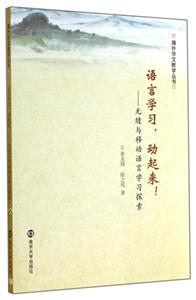
作者:(英)Geoffrey N.Leech著
页数:26,240页
出版社:外语教学与研究出版社
出版日期:2022
ISBN:9787521329346
电子书格式:pdf/epub/txt
内容简介
本书是运用语言学理论和分析方法解析诗歌语言的开山之作。作者以“前景化”为主线, 重点介绍了诗歌语言的特点及其变异形式, 用丰富的实例与翔实的解析引导我们运用语言学分析方法赏析英诗, 为我们研究文学语言的本质和属性提供了许多宝贵的启示和依据。本书理论阐述清晰易懂, 既适合专业研究者与高校师生阅读, 也适合喜爱英文诗歌的一般读者阅读。
作者简介
杰弗里· N. 利奇(Geoffrey N. Leech):英国知名语言学家、文体学家、哲学家,曾任英国学术院院士、兰卡斯特大学语言学及现代英语系教授。
本书特色
适读人群 :学生,教师“当代国外语言学与应用语言学文库(升级版)”是主要面向高校英语专业高年级本科生、研究生及英语教师的一套大型的、开放性的系列丛书。本升级版或保留原有经典图书品种,或继之以经典图书的新版,或引进国外语言学与应用语言学领域的新锐力作以进一步拓展学科领域,希望它能继续对我国语言学教学与研究和外语教学与研究起到积极的推动作用。
《英诗学习指南:语言学的分析方法》是“当代国外语言学与应用语言学文库(升级版)”中的一本,由知名语言学家和文体学家杰弗里·N. 利奇(Geoffrey N. Leech)撰写。作者以研究文学文体的语言为宗旨,指导我们运用语言学分析方法赏析英诗,探寻文学语言的本质和属性。本书理论清晰,案例丰富,是文体学研究不容错过的入门专著,也可为英语诗歌爱好者提供阅读指导,从而通过科学客观的方法欣赏诗歌之美。
目录
Foreword xxi
Preface xxiii
Acknowledgments xxv
INTRODUCTION 1
0.1??The ‘lang.-lit.’ problem 1
0.2??A descriptive rhetoric 3
0.3??Poetic language and ‘ordinary’ language 5
0.4??A possible misgiving 6
Notes 7
1??POETRY AND THE LANGUAGE OF PAST AND PRESENT 8
1.1??Varieties of English usage 8
1.2??Linguistic convention in poetry 12
Examples for discussion 19
Notes 22
2??THE CREATIVE USE OF LANGUAGE 23
2.1??The escape from banality 23
2.2??Two meanings of ‘creative’ 24
2.3??The qualities of prose in poetry 25
2.4??Degrees of linguistic audacity 29
Examples for discussion 33
Notes 35
3??VARIETIES OF POETIC LICENCE 36
3.1??Anatomy of language 37
3.2??Types of deviation 42
3.3??Conclusion 52
Examples for discussion 53
Notes 54
4??FOREGROUNDING AND INTERPRETATION 56
4.1??Foregrounding 56
4.2??Interpretation 58
4.3??Parallelism 62
Examples for discussion 69
Notes 71
5??VERBAL REPETITION 73
5.1??Schemes and tropes 74
5.2??Formal repetitions 76
Examples for discussion 86
Notes 88
6??PATTERNS OF SOUND 89
6.1??Sound patterns within syllables 89
6.2??Sound patterns in relation to stress 91
6.3??‘Music’ in poetry 93
6.4??The interpretation of sound patterns 95
Examples for discussion 100
Notes 102
7??METRE 103
7.1??Rhythm and metre 103
7.2??The rhythm of English 104
7.3??Metre and the line of verse 111
7.4??The interaction of rhythm and verse form 119
7.5??Grammar and metre 122
For discussion 128
Notes 128
8??THE IRRATIONAL IN POETRY 131
8.1??A logical view of meaning 131
8.2??Redundancy in poetry 136
8.3??Absurdity in poetry 140
8.4??Beyond reason and credibility 143
Examples for discussion 144
Notes 146
9??FIGURATIVE LANGUAGE 147
9.1??Transference of meaning 148
9.2??Aspects of metaphor 153
Examples for discussion 164
Notes 165
10??HONEST DECEPTIONS 166
10.1??Hyperbole and litotes 167
10.2??Irony 171
Examples for discussion 179
Notes 182
11??IMPLICATIONS OF CONTEXT 183
11.1??Licences of situation 184
11.2??The given situation 187
11.3??The ‘world within the poem’ 189
11.4??Situation and action 199
11.5??Conclusion 201
Examples for discussion 202
Notes 204
12??AMBIGUITY AND INDETERMINACY 205
12.1??Kinds of ambiguity 205
12.2??Puns and word-play 209
12.3??Open interpretation 214
Examples for discussion 221
Notes 223
CONCLUSION 225
Notes 227
Suggestions for Further Reading 229
General Index 233
Index of Sources of Examples for Discussion 239














